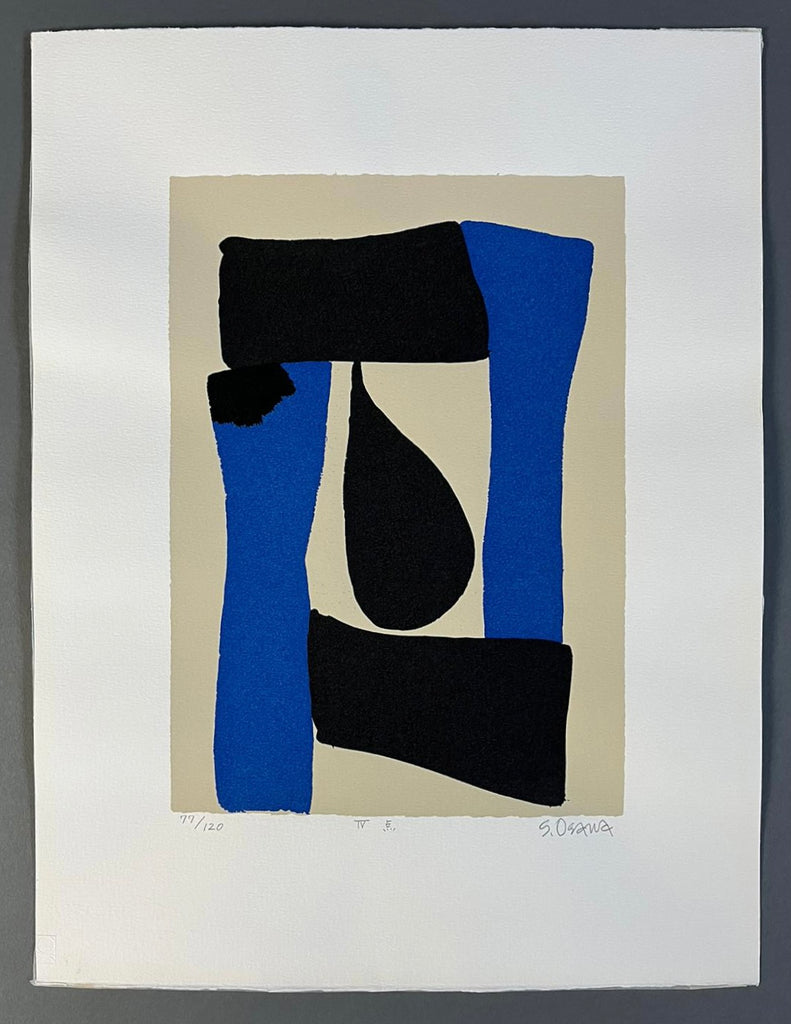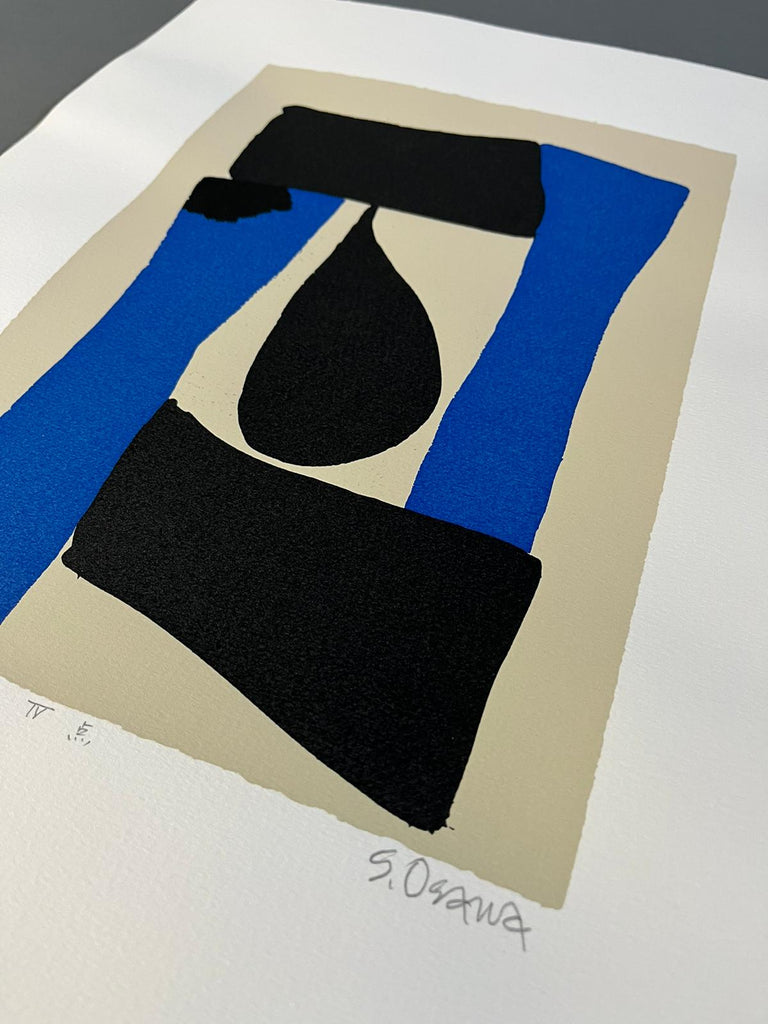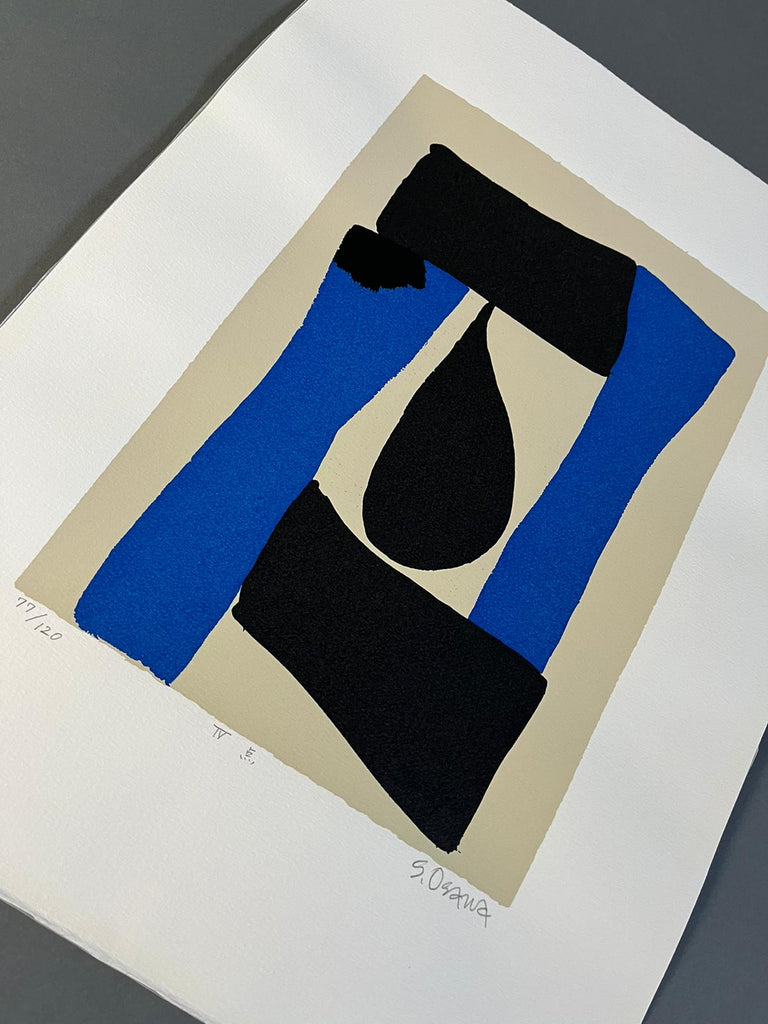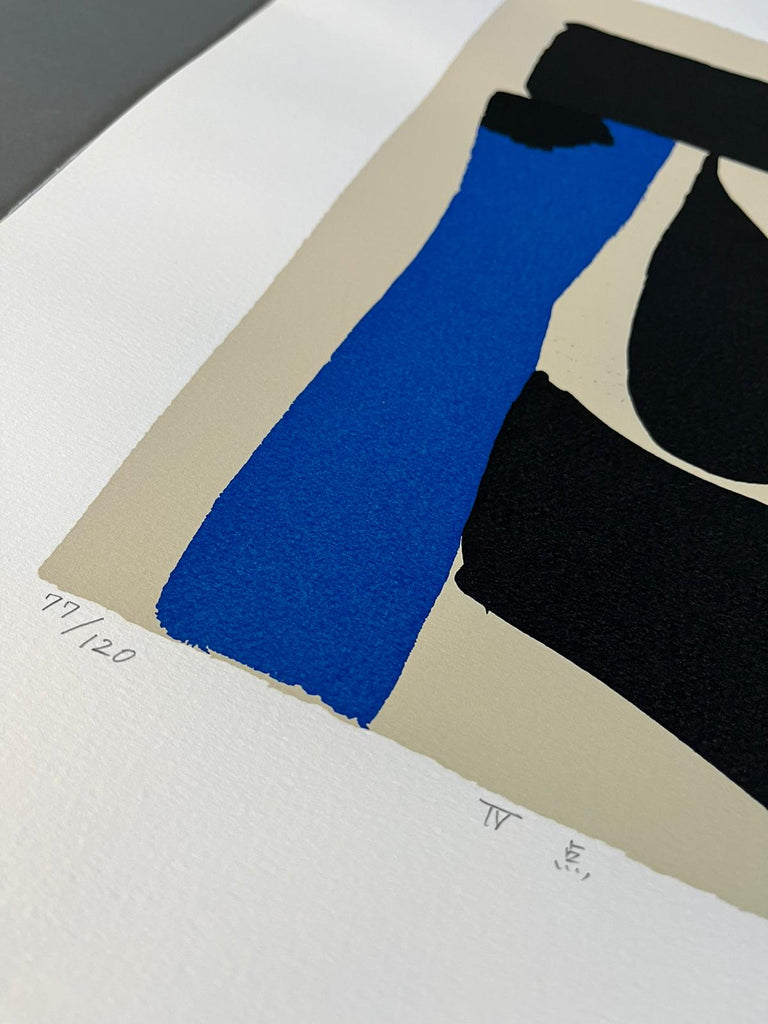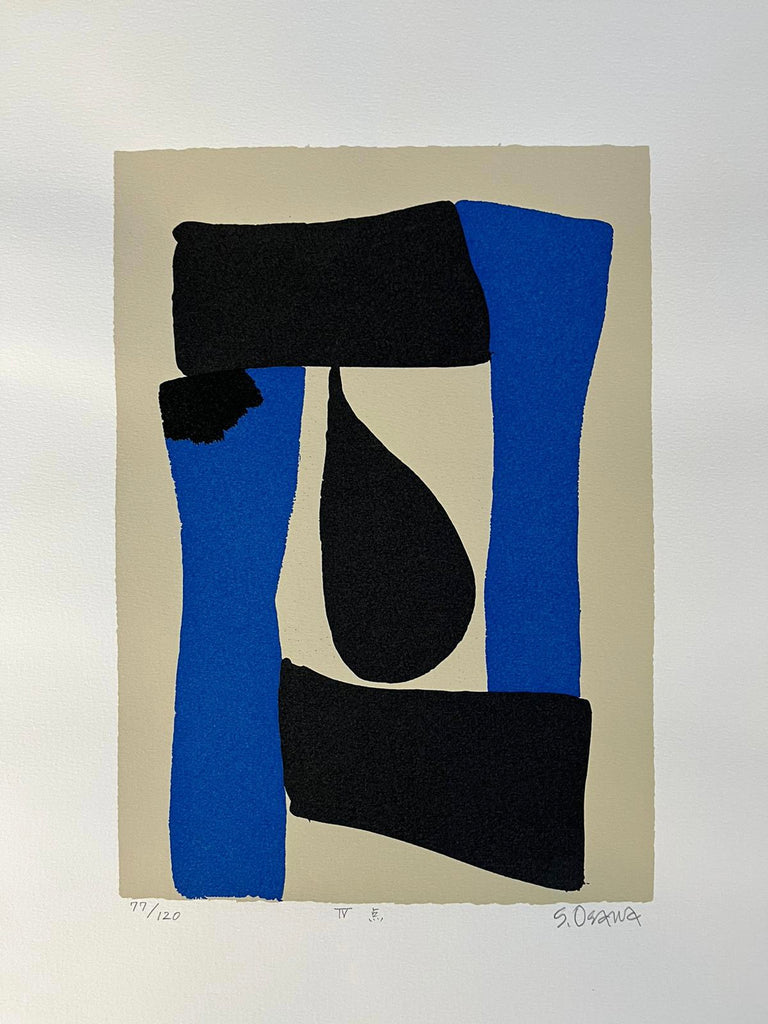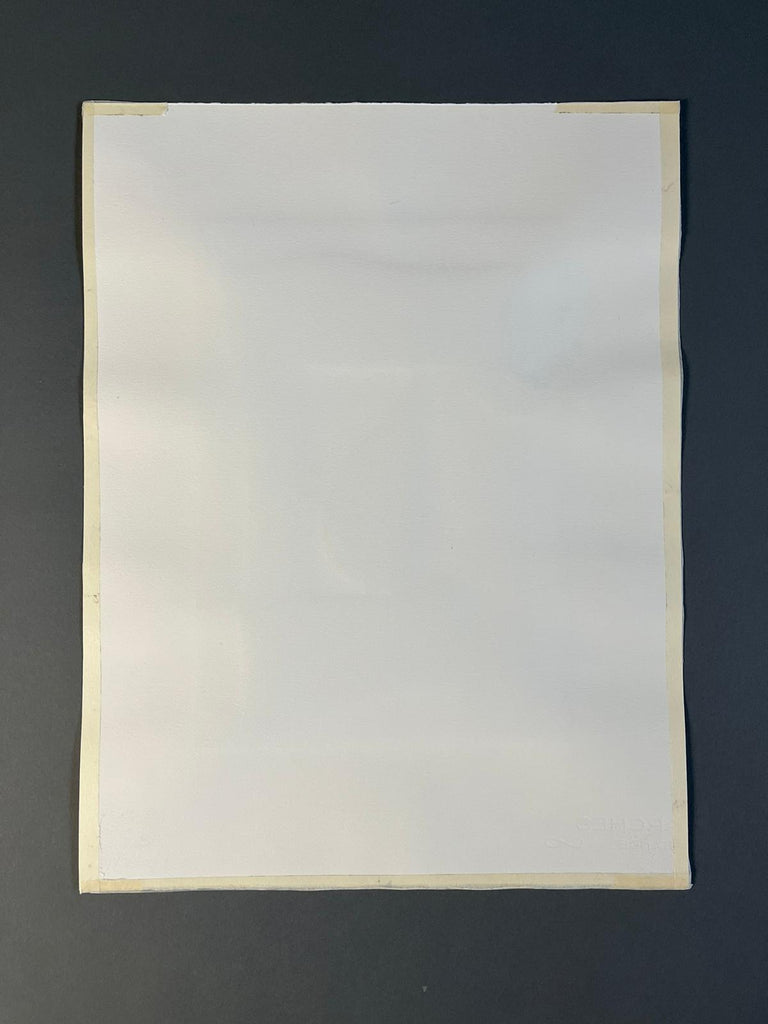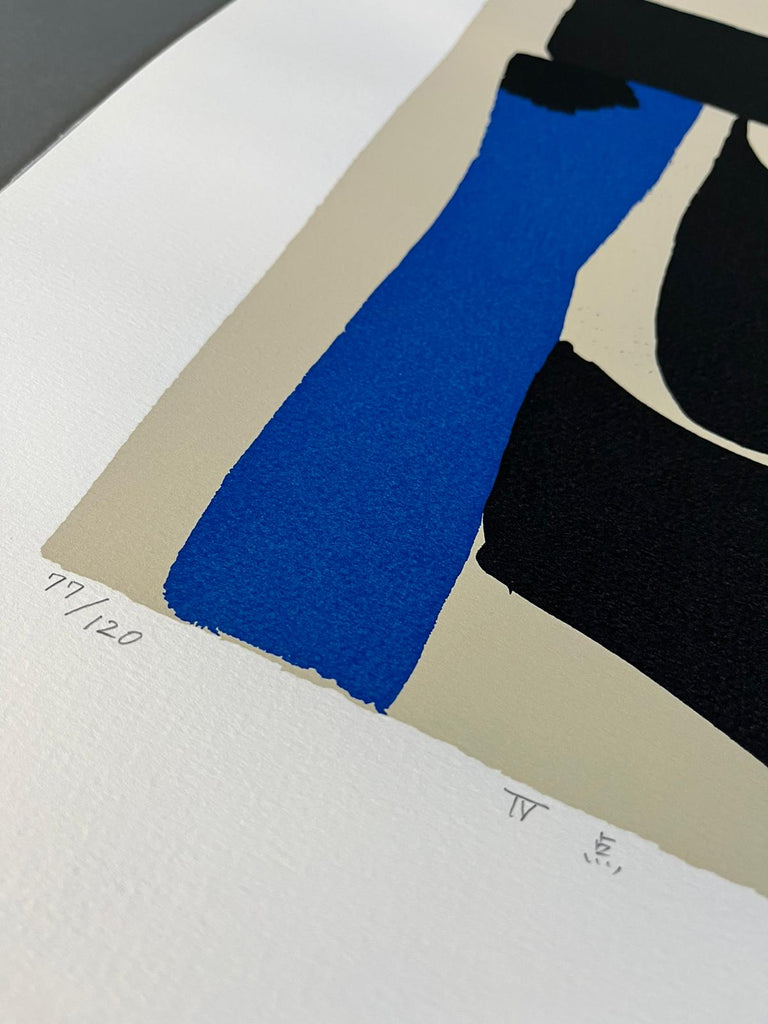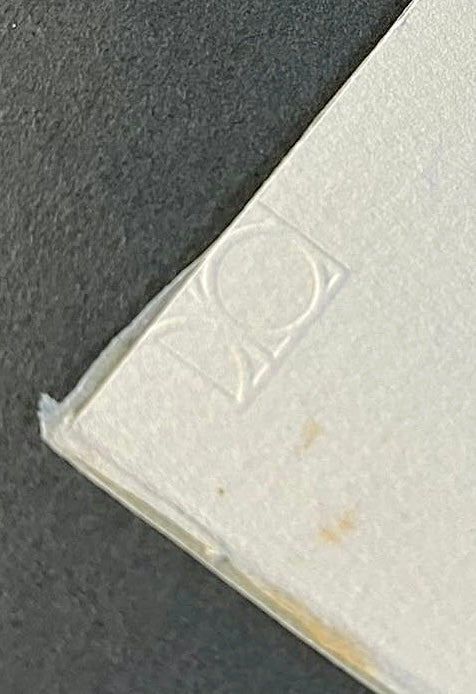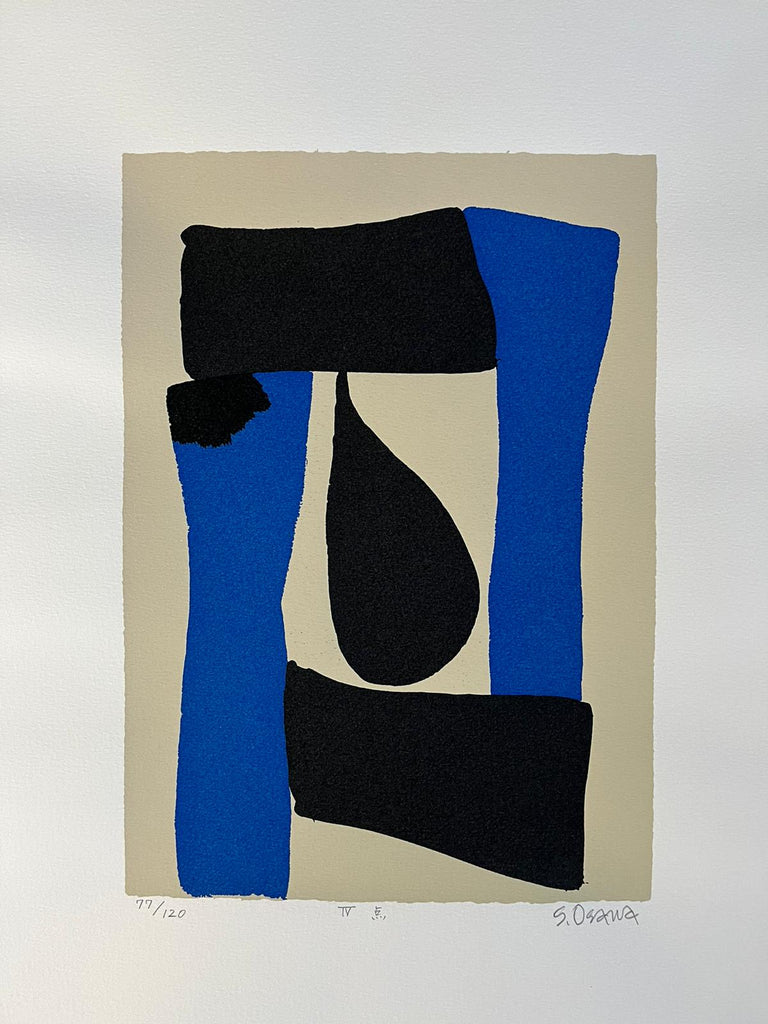"Blue and Black Screenprint "Dot" by Shosuke Osawa
Vintage ObjectsImporting Art into the United States is exempt from all U.S. tariffs but please, do check!
Rare limited edition #77 / 120 screen print titled IV "Dot" in Japanese, by modern & contemporary Japanese artist Shosuke Osawa 1903 - 1997.
Dimensions : Height : 18.12 in (46 cm) Width : 13.78 in (35 cm) Depth : 0.2 in (5 cm)
Born 1903 in Tokyo, Osawa graduated in 1928 from Tokyo School of the Arts (currently, Tokyo University of the Arts). He joined Nika-kai the following year, actively participating in the organization until 1982. He was appointed a professor at Tama Art University in 1954, a position he held until the 1970s. He exhibited at the Japanese Modern Art Exhibition, Salon de Mai, the International Exhibition of Figurative Art, the Sao Paolo Biennial and others. Over time, Osawa who started out as a figurative painter has been able to incorporate more and more elements of abstract art into his works, adding to the uniqueness of his approach. He worked mainly in oil painting, but also as a printmaker.
The artwork will be shipped insured overseas. Cost of transport to the US is Euro 125.
Wear consistent with age and use.
We ship worldwide. Request a shipping quote by e-mail to tacojoustra@vintageobjects.com mentioning the piece you are interested in.
Pick-up by appointment only.
We are a 1stDibs Platinum 5 Star Dealer.
Process of Japanese Woodblock Printing
The traditional process of Japanese woodblock printing involves several meticulous steps:
1. Design (Hanga)
The process begins with the artist creating a detailed design, usually on thin paper. This design serves as the blueprint for the entire print.
2. Transfer to Wood (Kento)
The design is then pasted face down onto a block of cherry wood. The back of the paper is rubbed to transfer the ink outline to the wood surface.
3. Carving (Hori)
A skilled carver then chisels away the wood around the design, leaving raised lines that will hold the ink. Separate blocks are carved for each color in the final print. This stage requires great precision and craftsmanship.
4. Printing (Suri)
Printing is done by pressing paper onto the inked woodblock. The printer applies ink to the block using brushes and then places a dampened sheet of handmade paper onto it. They use a tool called a baren to rub the back of the paper, ensuring the ink transfers evenly.
Each color requires a separate block and careful alignment, known as registration. This multi-step process is repeated for each color, often requiring the collaboration of multiple artisans for one print.
5. Drying and Finishing
Once all the colors are applied, the print is carefully dried. It is then inspected for any imperfections. Finished prints might receive additional touches, like embossing or burnishing, to enhance their beauty.
Conclusion
Japanese woodblock printing is a highly intricate and collaborative art form that has significantly influenced both Japanese and global art history. Its techniques have been passed down through generations, preserving the meticulous craftsmanship and aesthetic values of this traditional art form.
